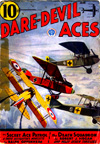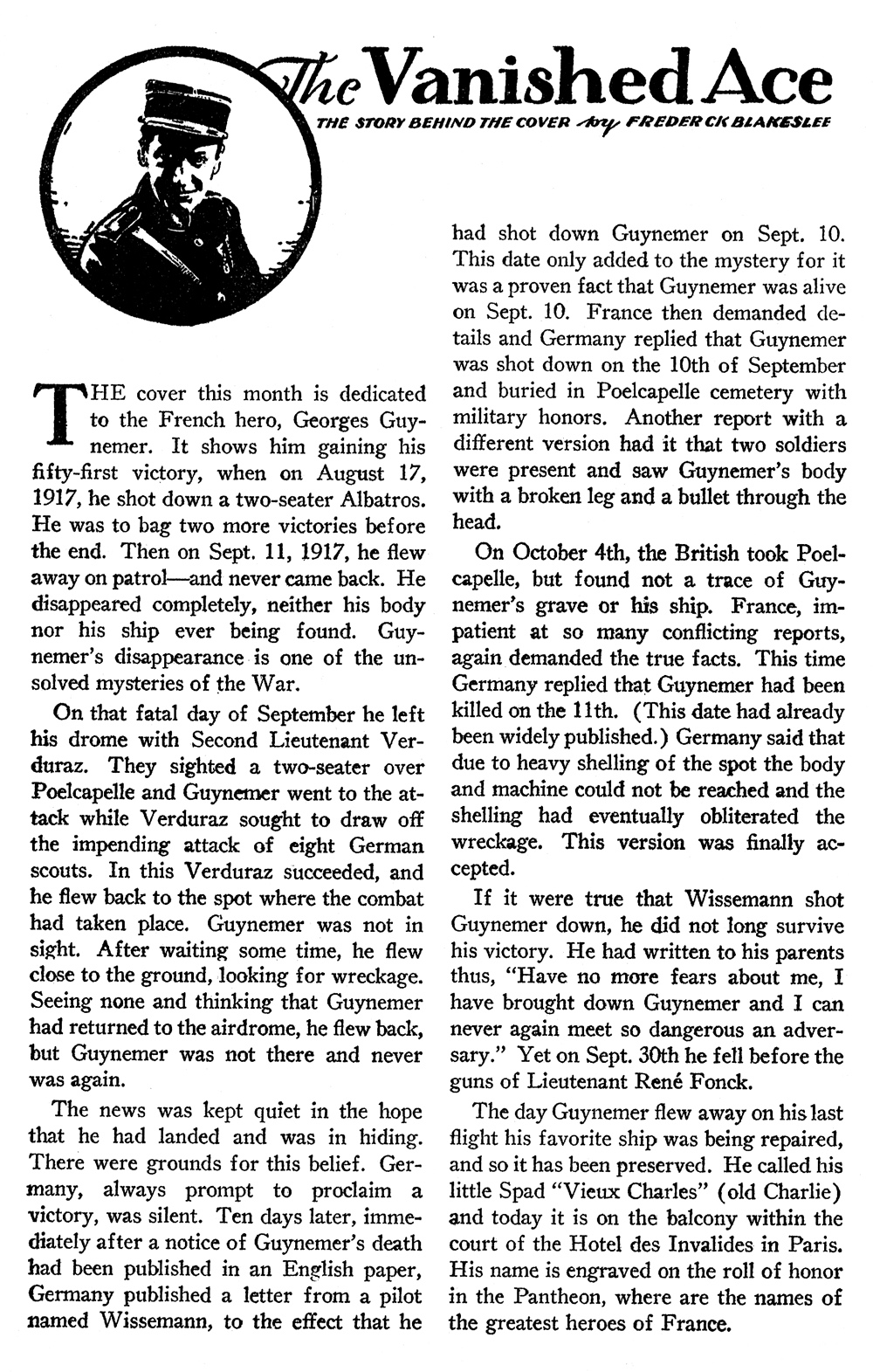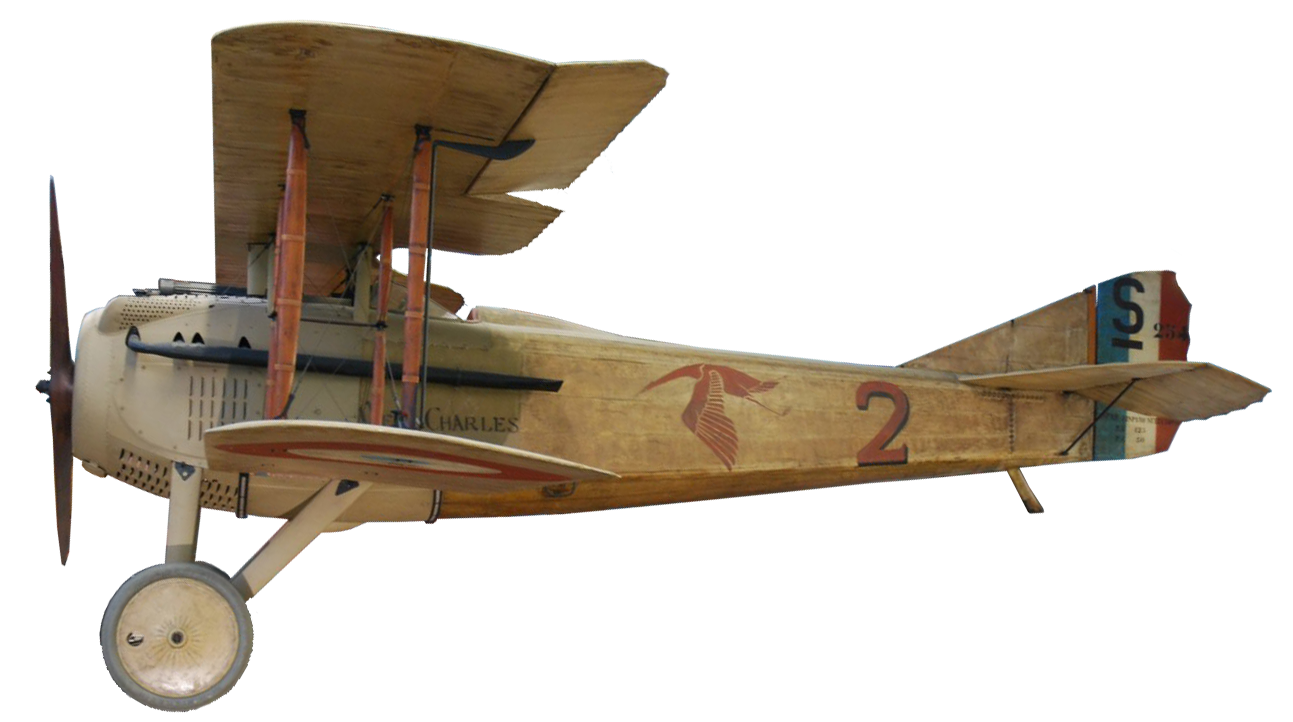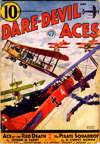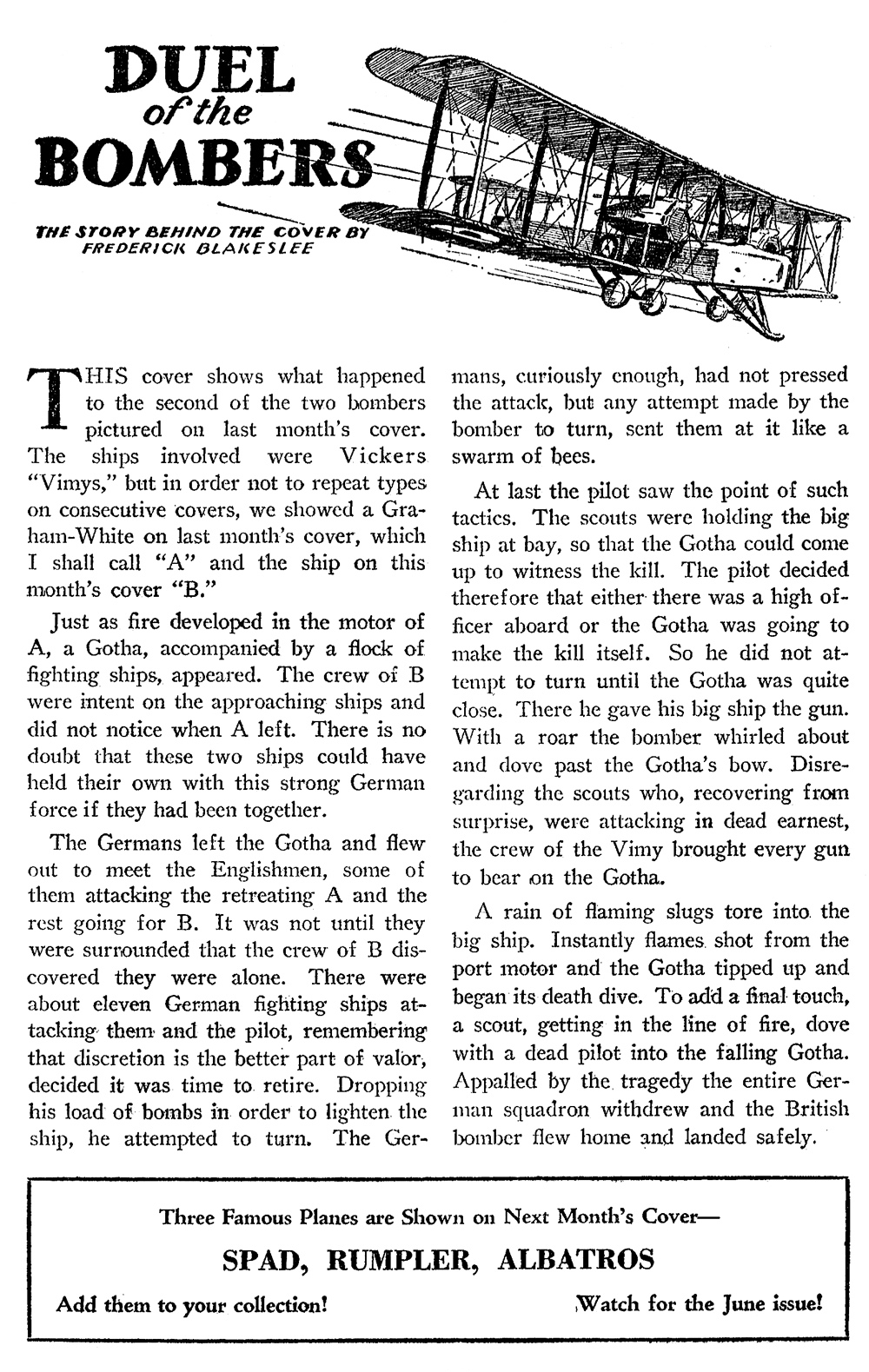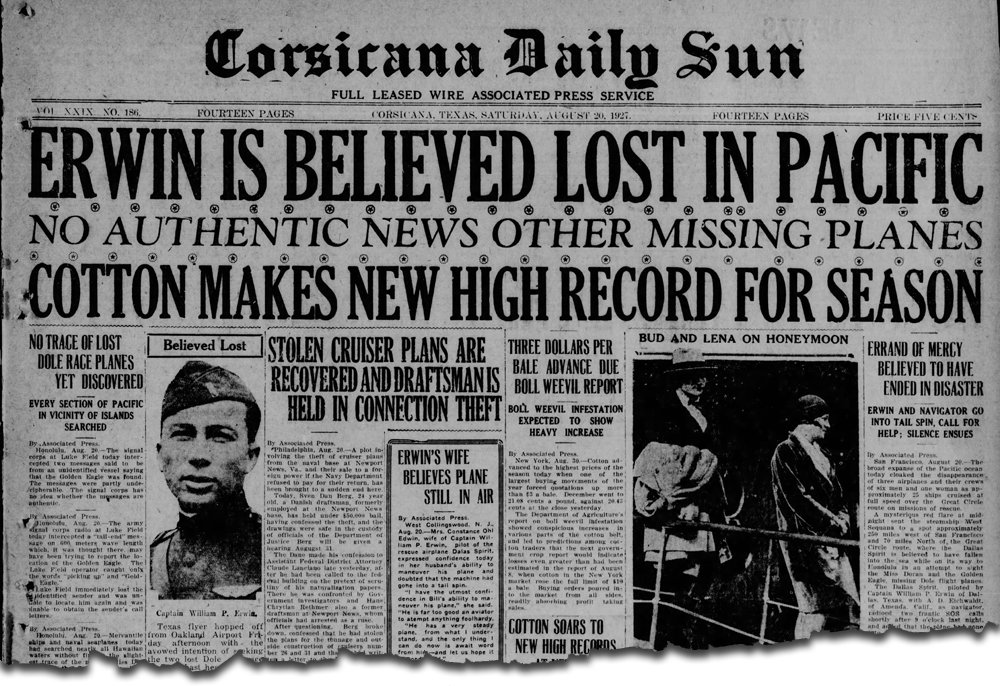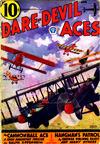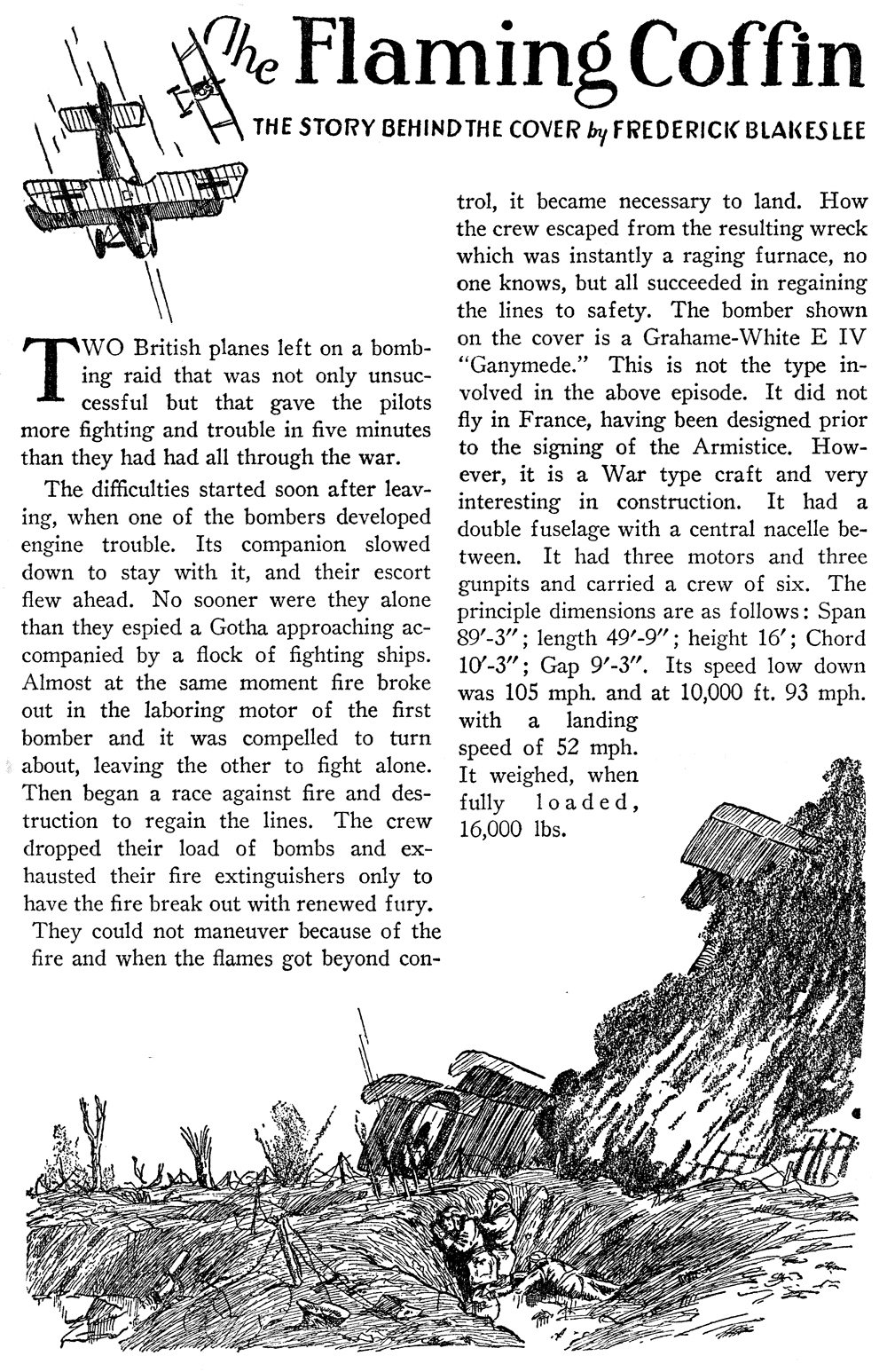A few years ago, writer and frequent Age of Aces contributer Don Hutchison came up to our table at PulpFest and handed us a manilla envelope, entrusting us with its contents.
When we opened the envelope, there were correspondence between Robert Hogan and Henry Steeger and a copy of the Newton, New Jersey Sunday Herald from October 21st, 1962. The Newspaper contained a lengthy article on former Sussex resident, Robert J. Hogan, nicely illustrated (although there are a few inaccuracies in the captions).
Here is that article:
Lurid Plots Hatched In Sussex Boro
Newton, New Jersey, Sunday Herald • 21 October 1962 (vol.1 no.19)
|

G-8 creator, Robert J. Hogan, displays the first and last of the drawingings made by John Flemming Gould for the “Battle Aces” series which Hogan wrote between 1933 and 1942. The author has the original cover drawings at his Sparta home.[1] (Staff Photo)
|
40 Bank St. Birth Place Of Spy King
Improbable though it may seem, a stately home on a quiet Sussex Borough back street was the hatchery for some of the most diabolical, bloodcurdling international spy plots that rocked the English speaking world less than 30 years ago.
The nefarious schemes that pour from the sparsely-furnished little room upstairs at the rear of the hall overlooking Clove avenue make today’s U-2 flights, satelite “spy-in-the-sky” and CIA cloak and dagger shenanigans sound like Sunday School stories.
For here, in the house at 40 Bank street, now owned and occupied by Dr. and Mrs. Lester Eddy, was born the dauntless G-8, the “Master Spy” and his “Battle Aces”, a fearless group of fliers who thwarted the cruel and ingenious enemies of the United States at every turn—in pulp magazines from coast to coast and around the world.
G-8, the “Spy King of the Pulps”, was the brainchild of Robert J. Hogan, one of the world’s most prolific writers, who now lives at 8 Tamarack Road, Sparta. Back in the depression days of the 1930’s, Hogan thought nothing of pounding out 200,000 words a month for the pulp magazines.
Two Stenographers
His agile, racing mind kept two stenographer-typists busy on split shifts as he produced a complete novel and two short stories every month for the G-8 series, and sandwiched in a cops and robbers series called The Secret Six and a Chinese menace series known as Wu Fang. Each of these called for a 60,000-word novel a month plus enough short stories to fill the back of each magazine.
And G-8 would not have been born in Sussex Borough had it not been for a couple of ice cream cones.
Hogan, who now divides his time between Sparta and Coral Gables, Fla., recalls his introduction to Sussex County in 1931. He and his wife. Betty, were house hunting. They had been living in Melbourne, Fla., when he started his writing career, but decided they wanted to be closer to New York City, editors and the magazine markets.
So, they piled their belongings in their old car and headed north. They had previously seen and liked the old stone houses around Kingston, N.Y. But Kingston was a little far up the river to run into New York and back in a day. (The budding author had to watch his pennies.) Newton seemed to be a good distance, beyond the high rent, daily commuting area.
“It was the hottest day we ever hope to see; the afternoon must have been over a hundred when we pulled into Newton and parked by the square,” Hogan recalls. From Steve Case, who then operated a real estate business on High street next to The New Jersey Herald, they learned the only rental available in Newton was half of a two-family house for $65 a month.
|

This is 40 Bank street in Sussex where Hogan launched his spine-tingling G-8 stories for the pulp magazines in 1933. The one-story front has been added to the house since the days when the Hogans rented it from Ben Simmons. Today it is occupied by Dr. and Mrs. Lester Eddy. (Staff Photo)
|
Rent Too High
The Hogans wanted a single house. “Besides, $65 was twice too high for us,” Hogan points out. They asked about Sussex Borough.
“Rents are out of sight in Sussex,” they were told. “High Point Park has boomed the whole area.”
Discouraged, hot and unhappy, the Hogans returned to their car. We were miserable. We looked at our road map and talked about heading for Kingston as a last resort, but with no assurance of finding what we wanted when we got there,” Hogan continues.
“We saw that Sussex was on the way to Kingston. They might have cold ice cream cones in Sussex. We drove on; every mile was torture. We were sweltering, lost children becoming more and more defeated.”
They chugged glumly north through Ross’ Corner. A short distance past the intersection “we stopped at the side of the road and talked over our problem. The whole future seemed hopeless.”
The wayfaring Hogans drove on to Sussex, up Main street, and stopped opposite Van Inwegen’s Drug Store. Hogan went in to get ice cream cones.
“The Vanlnwegen son was behind the soda counter. I ordered the ice cream cones and; just by way of conversation while he dipped, asked if there were any homes for rent in Sussex.”
“Sure,” he said. “You can go over to the Sussex Independent office around the corner and read their ads. But I know the old Simmons mansion up on Bank street is for rent, if it wouldn’t be too big for you.” He suggested they look in the windows.
Window Inspection
Hogan continues: “We drove up Bank street. The house was vacant. We looked in the first floor windows while we finished our ice cream cones.”
“Harry Beemer came over from across Main street where he lived and told us as much as he could about the place. Ben Simmons owned it, but this being August, Ben and his family were at their summer place at Culver Lake.
“Harry said we could drive up Clove avenue, to Bill Little’s house and they’d put us up for the night. In the morning we could see Ben Simmons at his place of business.”
They not only found a comfortable room at the Little home, but also had dinner with the family and were taken for a ride to High Point “That ride to cool High Point just about saved our lives,” Hogan recalls.
The next morning they were waiting for Ben Simmons when he arrived at his store. He said, “How would $35 a month suit you for rent?” The deal was closed then and there, and the Hogans moved into 40 Bank street and remained there for three years.
Hogan continues to reminisce: “They were rough times financially. I wrote furiously, gaining very slowly. One editor said he liked a story of mine about a cowboy turned aviator, who carried his old western six-guns at his side in France. He wanted me to do a series of this character, Smoke Wade, every month, for which he would pay me 1½¢ a word.
This meant we could count on about $200 a month—a near fortune in 1932—for that one novelette (a few days work at the most), besides all the other short stories I might turn out and sell.
|

Author Hogan works at his typewriter, turning out another magazine story. Behind the typewriter is an illustration made almost 30 years ago for his highly successful G-8 series.[2] (Staff Photo)
|
Plan Collapses
“Our joy lasted nearly a week. Then came a letter from the editor saying the publishers had decided to discontinue the magazine. Not only was I out of doing the sure-fire series for him, but he, the editor, was suddenly out of work himself. So went the magazine business.[3]
“During those uncertain times, when stories were more likely not to sell than to sell, probably no tenant ever had a more sympathetic, understanding landlord than Ben Simmons.”
Hogan, who learned to fly during World War I and had worked as a cow puncher earlier in his career, used his personal experiences as backgrounds for his stories. At this period he was writing a lot of World War I air stories for Popular Publications and they had been going over fairly well. One day in 1933 the publisher called him in and suggested Hogan try his hand at writing a full book-length novel and a short story or two to fill a magazine.
“Driving home to 40 Bank street from Manhattan, everything began to click into place. Popular had a magazine called Battle Aces that was doing fairly well, but they would like to switch that title to a new magazine if possible.
G-8 Is Born
“Various branches of the Army, I knew, were designated as Gl, G-2, and so forth. Why not G-8, the Master American Flying Spy? Pilots I had known in my flying days came to mind, and from these developed the characters that were to appear in my stories. Then, what about the first novel?
“How about a gigantic German plane in the shape of a bat spewing the most poisonous gas over the unsuspecting countryside? As I drove up Main street in Sussex, along Clove avenue and into the yard, I thought of the title for the first G-8 story: The Bat Staffel (staffel being German for squadron).”
And so, the G-8 series was conceived and born, a series in which G-8 fought monsters with tentacles, men with beast brains, flying zombies, marching skeletons, mad scientists, mysterious gas, flying bombs, monster tanks with spiked treads and flame throwers, armored dirigibles and magnetic rays.
The fertile Hogan brain pulled out all stops and went to work in high gear. “I began to bang out The Bat Staffel in the little room upstairs at the rear of the hall overlooking Clove avenue. My desk was an old kitchen table found in the cellar. Ben Simmons gave us permision to glue it together and put a pressedwood top on it.”
The first of about 100 novels for G-8 and His Battle Aces was written and in the mail to the publishers in eight days. The publishers liked it and asked when he could start on the second G-8 novel.
|

This is John Flemming Gould’s drawing of the intrepid G-8, the principle character in the series of adventure stories written during the 1930s by Robert J. Hogan. The drawing is reproduced by permission of Popular Publications, Inc., New York City, publishers of the G-8 and his Battle Aces series. (Staff Photo)
|
Assistance Needed
Then Hogan realized he would need some assistance because he had committments for better than 100,000 words each month in other smaller series that were running at the same time. A secretary to take dictation was necessary.
Doris Wilson (now Mrs. Robert Hardin) had just been graduated from business school and was looking for work. She was hired to take dictation. When work piled up and more help was needed, Doris recommended a friend, Willeta Johnson, now Mrs. Harold Knoblauch
Recalling these hectic days, Hogan reports:
“One secretary would come over in the morning. I’d dictate two chapters, to her. and the other would arrive after lunch, and I’d dictate two chapters to her. It was up to them to get together and come up with a complete book. They told me later that often the one who had finished transcribing at home would wait for the other to return from dictation to learn what happened in her two chapters.”
Hogan’s publisher pushed him for copy. He was told not to bother edititing or rewriting — “Don’t even read it; just turn it out and mail it.” And he did.
“I have yet to read a G-8 story,” he says. “Wonder if they were any good?”
All Over the World
Good or bad, the G-8 stories were widely read all over the world, and although the writing was aimed at teenage boys, the writer had fans of all ages during the decade the series flourished. It was estimated by the circulation department that G-8 and His Battle Aces had more readers at its peak than all the boys book series out together.
As the words flowed out and the money flowed in, the Hogans began to think of building their own home, and they ultimately settled on Lake Mohawk. They spent nearly a year in Florida while the new home was under construction, and when they returned, Hogan continued his prolific writing, then with the secretarial assistance of Dorothy Brooks, later to become Mrs. Harold Puffer.
The advent of World War II and rising magazine production costs brought the G-8 series to an end. Hogan then turned to slick magazines, westerns, juveniles and television. One of his westerns became a movie, The Stand at Apache River. His juvenile novel, Howl at the Moon, is considered a classic boy-dog story. Many of his books have been translated into foreign languages.
But somehow, good old violent, bloodcurdling G-8 doesn’t seem to want to stay dead. There now appears to be a rapidly growing demand for reprints of G-8 and His Battle Aces in paper backs, and, as might be expected from the subject matter, television programers are showing interest in the old stories.
Born in Buskirk, N.Y., son of a Dutch Reformed minister, Hogan was educated at Blair Academy, St. Lawrence University and Harvard University. After college he drifted west and rode the range for a while before enlisting in the air branch of the U.S. Signal Corps (the forerunner of the U.S. Air Force) in January, 1918. He was discharged in November, 1918, and after that went into the business of flying and selling planes.
With a rented typewriter ($3.50 a month) he started his writing career in Florida in 1930 after reading a few stories in a pulp magazine and deciding he could do just as well. He did.

1 The paintings are by Frederick Blakeslee, not John Flemming Gould and are from the first issue, “The Bat Staffel” (Oct 1933) and “Scourge of the Sky Monster” (June 1943). Not the last issue which was June 1944.
2 The painting is the August 1933 cover of Dare-Devil Aces by Frederick Blakeslee. Incidentally, the G-8 pulp on the desk is “Death is My Destiny” (August 1941).
3 He is referring to the Street & Smith run of Smoke Wade in Air Trails which folded after three stories. A fourth ran in Complete Stories Magazine the following month. The character moved to Popular Publicaions’ Battle Aces and then to Dare-Devil Aces, and eventually winding up as a supporting feature in G-8.
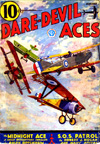 TWO ALBATROSSES had become the special terror of Allied two-seaters. Known as the “Wolves of The Sky,” unlike wolves they were not cowardly. They fought viciously but fairly. They seemed to love a fight against odds. Although they did not hesitate to attack a two-seater that was weakly protected, they seemed to take special interest in those which had strong escorts.
TWO ALBATROSSES had become the special terror of Allied two-seaters. Known as the “Wolves of The Sky,” unlike wolves they were not cowardly. They fought viciously but fairly. They seemed to love a fight against odds. Although they did not hesitate to attack a two-seater that was weakly protected, they seemed to take special interest in those which had strong escorts.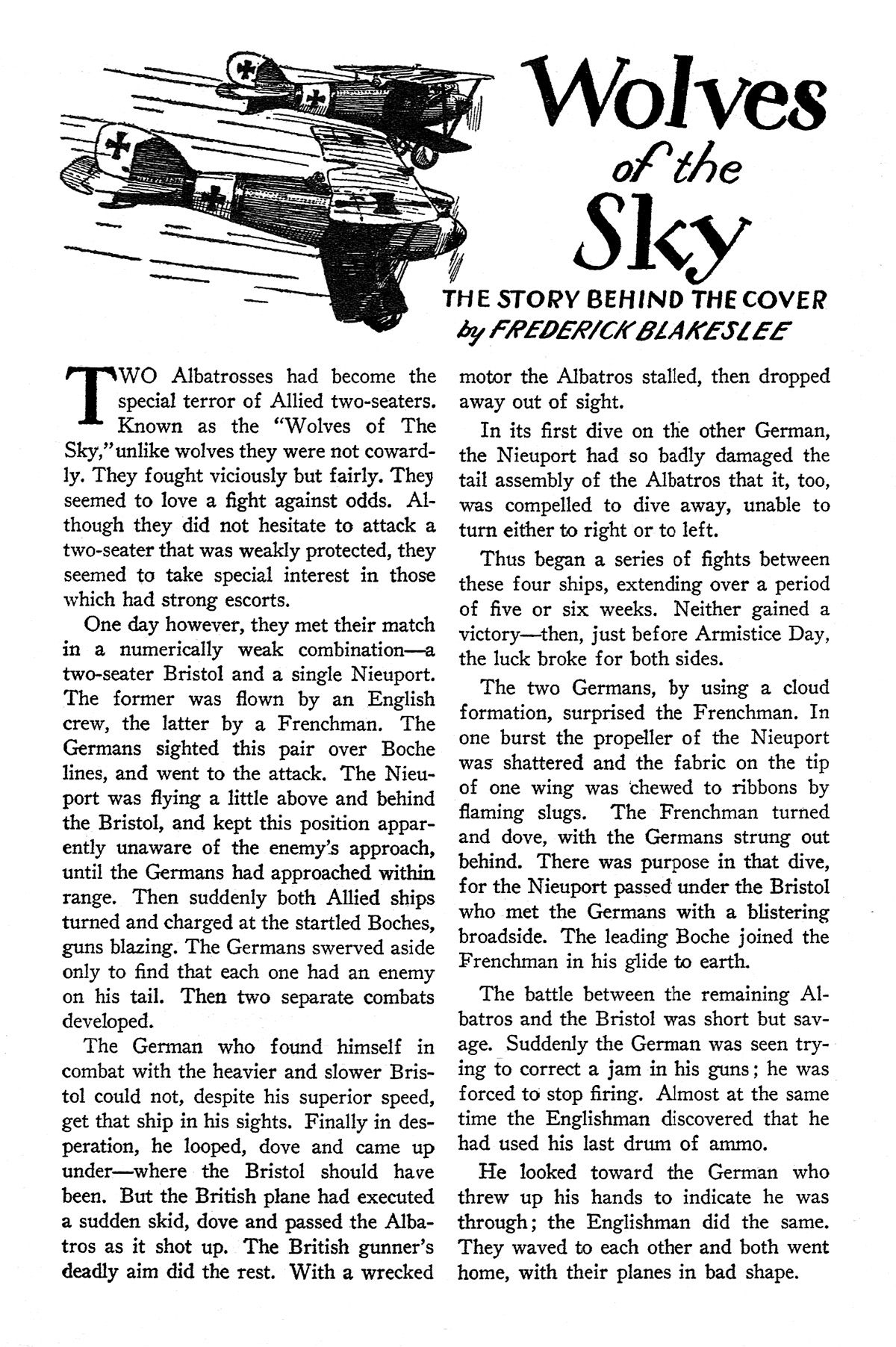





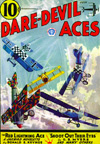
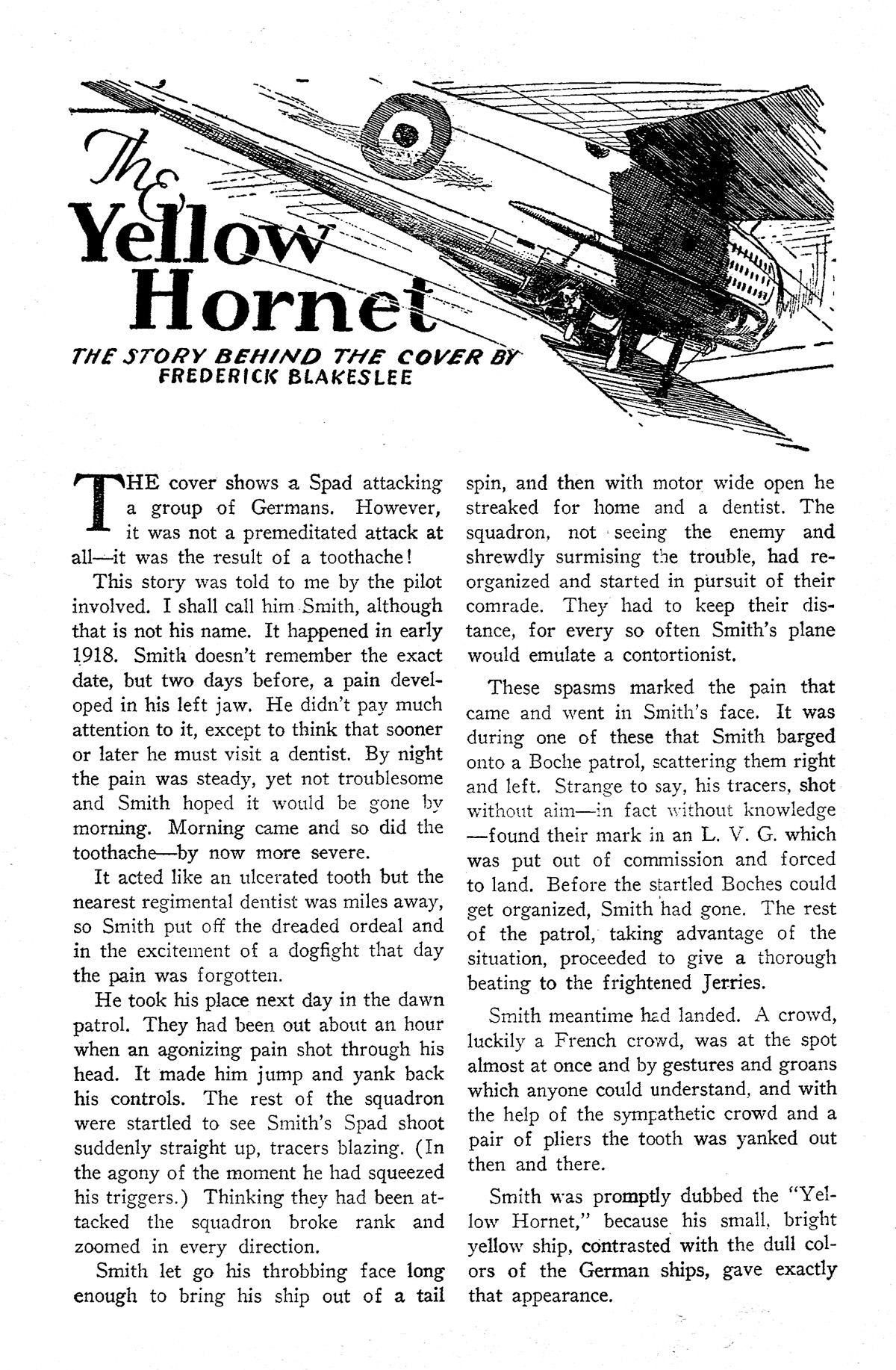
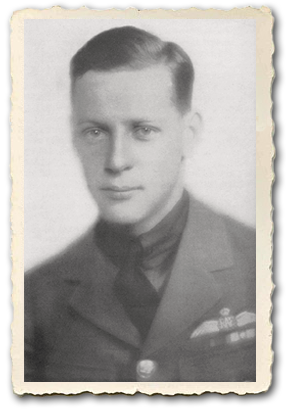 December 1914 and served with the 5th Field Company of the Canadian Army Engineers on the Western Front. He transfered to the RFC in September of 1917 where he was assigned to the 70th Squadron RFC. By this time he had made the rank of Captain and flying a Sopwith Camel, he is credited with 33 victories! He earned the Distinguished Service Order, the Military Cross and the Military Cross with Bar!
December 1914 and served with the 5th Field Company of the Canadian Army Engineers on the Western Front. He transfered to the RFC in September of 1917 where he was assigned to the 70th Squadron RFC. By this time he had made the rank of Captain and flying a Sopwith Camel, he is credited with 33 victories! He earned the Distinguished Service Order, the Military Cross and the Military Cross with Bar!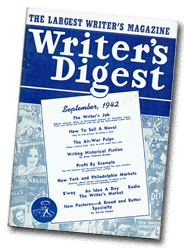 Here’s a nifty little article from the pages of the September 1942 issue of Writer’s Digest, the leading and largest writer’s magazine. Every issue is a gem. There’s usually articles about how to write for certain genres and markets; listings of the publications and opportunities available in different regions; and the letters column which frequently features letters from authors and publishers of the day.
Here’s a nifty little article from the pages of the September 1942 issue of Writer’s Digest, the leading and largest writer’s magazine. Every issue is a gem. There’s usually articles about how to write for certain genres and markets; listings of the publications and opportunities available in different regions; and the letters column which frequently features letters from authors and publishers of the day. 